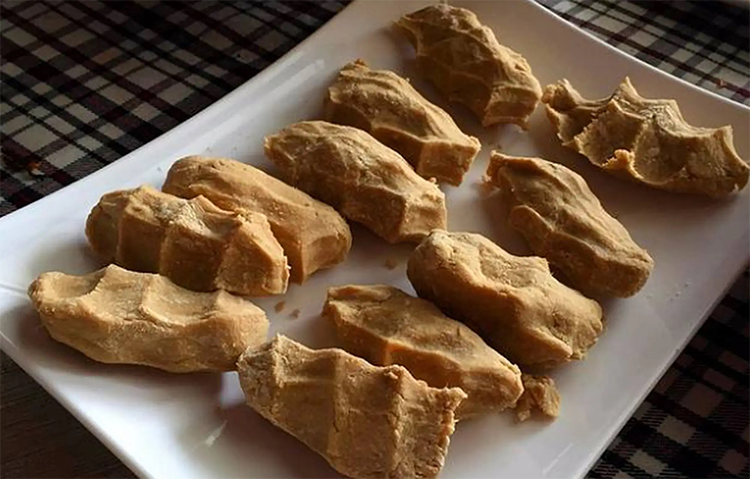Tibetan Tsampa: Highland Energy in Your Hands
1. Origin and History: A Highland Survival Recipe
Tsampa’s story goes hand in hand with agriculture on the Tibetan Plateau. Highland barley, cultivated here for millennia, was roasted and ground into flour to create a durable, portable staple. This technique suited a mixed pastoral and farming lifestyle and helped generations thrive in harsh, cold conditions.
2. Cultural Significance: Food, Faith, and Hospitality
In Tibet, tsampa is more than nutrition; it’s social and spiritual. Offering tsampa is a sign of warm welcome in homes. Monasteries use it as an offering in ceremonies, and it appears in New Year rituals to symbolize abundance and good fortune.

3. Key Ingredients: Roasted Highland Barley and Butter Tea
Tsampa requires two essentials: roasted highland barley flour and butter tea. Highland barley is rich in fiber and micronutrients, while butter tea—made from yak butter, tea leaves, and salt—adds calories and warmth. Together they provide the high-energy balance suited to the high-altitude climate.
4. Preparation Process: From Grain to Dough
Traditional preparation begins by roasting barley until fragrant, then grinding it into a fine, slightly yellow flour. Historically stone or water mills were used; today mechanical mills exist, but many locals still prefer slow-roasted, hand-ground tsampa for its distinctive toasty aroma.

5. Taste and Texture: Honest, Grain-Forward Flavor
Dry tsampa tastes of toasted grains with a faint sweetness. When mixed with warm butter tea it becomes dense, slightly crumbly, and rich—offering a satisfying, earthy mouthfeel that takes a moment to appreciate but often becomes addictive.
6. How to Eat Tsampa: A Hands-On Ritual
The classic way to eat tsampa is by hand: place flour in a bowl, pour in warm butter tea, and use your fingers (often the middle finger) to mix and compress the mixture into bite-sized lumps. This tactile method is part of the cultural experience.

7. Tasting Tips: Try It Like a Local
If you’re new to tsampa, start small and watch locals prepare it. If the salty butter tea is too strong, ask for a milder or slightly sweet version. Pair tsampa with yak yogurt or cured meat for an authentic Tibetan breakfast.
8. Where to Taste and Buy: Best Places in Tibet
In Lhasa, traditional teahouses and restaurants around Barkhor Street offer authentic tsampa. For a behind-the-scenes view, visit local mills near monasteries. Packaged, sealed tsampa is convenient for travel, while fresh loose flour found in local markets offers the truest flavor.

9. Simple Home Recipe: Bring the Plateau Home
To recreate tsampa: lightly toast highland barley or substitute with barley/oat flour until aromatic; brew strong tea and blend with butter and a pinch of salt; mix tea into the flour and knead into small balls. It won’t perfectly match the plateau, but it captures the spirit.
Tsampa is both sustenance and symbol—an enduring taste of Tibetan life. Sampling it offers a tangible connection to highland traditions, warm hospitality, and centuries of resourceful cooking. When visiting Tibet, let tsampa be one of your cultural touchstones.


